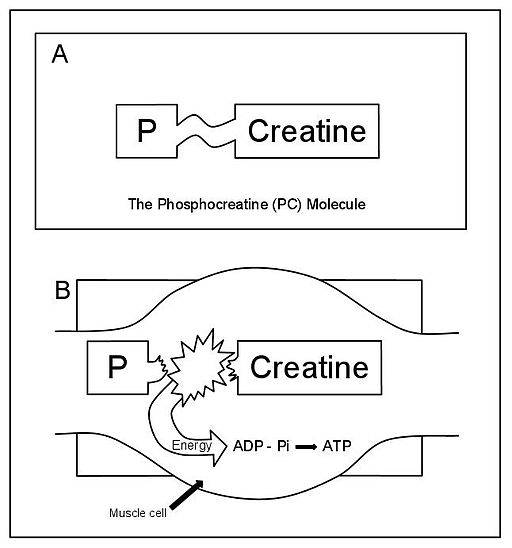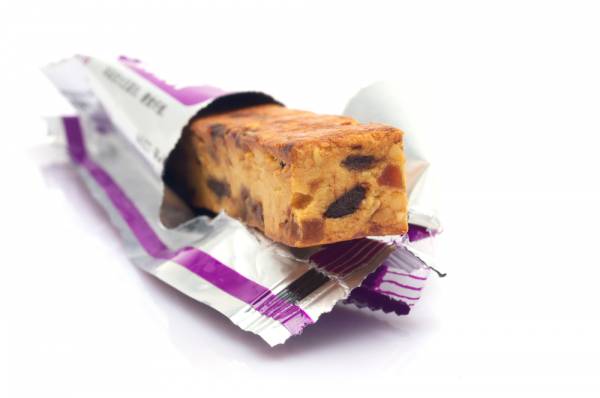We are constantly bombarded with energy bars, protein bars, energy drinks, and other supplements. But there is a huge misunderstanding of what an energy bar actually is and when we should actually eat it. People often have a romanticized image of sports nutrition and what is “healthy.” But the bottom line is that energy bars are food. That’s it, they are just food and should be analyzed as such.
Energy bars, gels, and other items fall under the banner of sports nutrition. The field of sports nutrition works to design products that allow us to continue to work out and perform at higher intensity for longer. Energy bars are primarily composed of carbohydrates, with smaller amounts of protein and fat, while energy gels and chews are usually just carbohydrates. These all are convenient forms of sugar that digest quickly to provide you with energy. They are designed to work with our energy systems and specifically support the aerobic system, which burns on carbohydrates.
The Energy Systems of the Body
If you remember back to high school, you know that ATP is what energizes our cells. We have a very small store of ATP in our bodies ready to go. Think of it as dynamite – it has a lot of punch but is gone in literally seconds. So we have three different systems in our bodies to create more ATP:
 First, we have our creatine phosphate (CP) system, also sometimes known as the ATP-PC system. CP is stored in our cells and can be rapidly converted into ATP and burned. Think of it as something closer to lighter fluid, it takes a second to start burning but does not last a long time. On average someone sprinting will burn through their CP stores in fifteen to thirty seconds.
First, we have our creatine phosphate (CP) system, also sometimes known as the ATP-PC system. CP is stored in our cells and can be rapidly converted into ATP and burned. Think of it as something closer to lighter fluid, it takes a second to start burning but does not last a long time. On average someone sprinting will burn through their CP stores in fifteen to thirty seconds.
Next, we have our anaerobic system, also sometimes called the glycolytic system. This involves burning carbohydrates without oxygen. It allows us relatively quick fuel, but at the expense of simultaneously creating lactic acid. It is an unsustainable energy system, meaning we can’t operate for a long time, but it’ll get us through in a short pinch.
Finally, the aerobic system is next and primarily what is trained in endurance athletes. Carbohydrates are converted with oxygen to produce ATP. This is a very efficient system and can operate for a long time. But our bodies have limited storage for carbohydrates, which are stored as glycogen. The human body holds roughly 2,000 calories of glycogen. This is stored in three places – our blood stream (blood sugar), muscles, and liver. Roughly 400 grams can be stored in the muscles and 100 grams in the liver, with a minimal amount in the blood stream. As our muscles deplete their glycogen, the liver releases its stores that are then made available for muscles to burn.
When to Consume Energy Products
So how does sports nutrition and my energy bar play into all this you ask? If you have ideal conditions and your storage levels are near 100% you have enough fuel for roughly twenty miles of running or several hours of moderate intensity exercise. Think of the wall runners hit between miles twenty and 24 – it’s because they run out of fuel. Eating some version of an energy product will give you additional sugar to burn so you can continue to operate at the same intensity level and keep running. If you don’t supplement with food, you will have to utilize primarily your ability to burn fat, but this process works at a slower rate and will force you to slow down.
Energy products can also be used for high intensity exercise or shorter duration training sessions. If you are leaving work and didn’t have a great lunch, you might need some fuel before your workout. This is when an energy bar can be appropriate.
When Not to Eat Energy Products
 Energy bars should not be a snack during the day. You wouldn’t put jet fuel in your car, so don’t use jet fuel when you plan on sitting on your butt. Energy products are also not a substitute for regular food. They should be used as sports nutrition and for when you are going to be active – and that’s it. If you consume an energy bar as a snack it’s not going to hurt you, but you are getting suboptimal nutrition and wasting money. You would be much better off eating real food and utilizing energy products when you are going to be working out hard.
Energy bars should not be a snack during the day. You wouldn’t put jet fuel in your car, so don’t use jet fuel when you plan on sitting on your butt. Energy products are also not a substitute for regular food. They should be used as sports nutrition and for when you are going to be active – and that’s it. If you consume an energy bar as a snack it’s not going to hurt you, but you are getting suboptimal nutrition and wasting money. You would be much better off eating real food and utilizing energy products when you are going to be working out hard.
Learning to manage your body and your food intake is critical for long-term health and performance. Real food should constitute the vast majority of your intake and sports nutrition should be supplemental and only used when necessary. You’ll feel better and perform better by taking the time to organize your diet. Don’t fall into gimmicks – learn the truth behind products before consuming them. Remember energy bars are sugar designed to be easy to eat and to fuel performance – not a snack!
ATP-PC graphic by Samuel Tiukuvaara (Own work) [CC-BY-3.0], via Wikimedia Commons.
Photos courtesy of Shutterstock.






